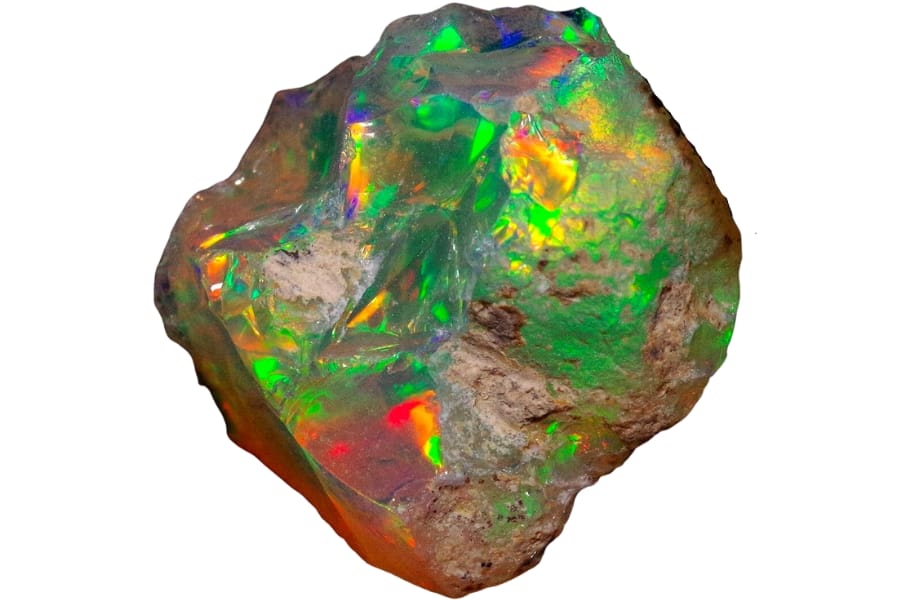If you want to know where and how to find opals in Arizona you’ve come to the right place. There are a lot of places you can look but some really great options that you should try first.
Don’t waste your time searching in locations that are played out or were never good to begin with!
Among our best-recommended sites here are the Cochise County, Arizona Blue Fire Opal Mine, Sunset Crater, Saddle Mountain, and San Pedro River. Imagine walking through these beautiful landscapes with the thrill of discovering opals. Excited? So are we!
- The deep experience and understanding of our team about the area
- Recommendations from local groups and clubs
- How easy it is to get the a particular location
- Safety and potential hazards when collecting
- Weighing private and public locations
- The ability for both experienced and novice rock enthusiasts to find great samples
With these factors in mind we’ve been able to put together a fantastic list that just about anyone can use!
The Best Places To Find Opal
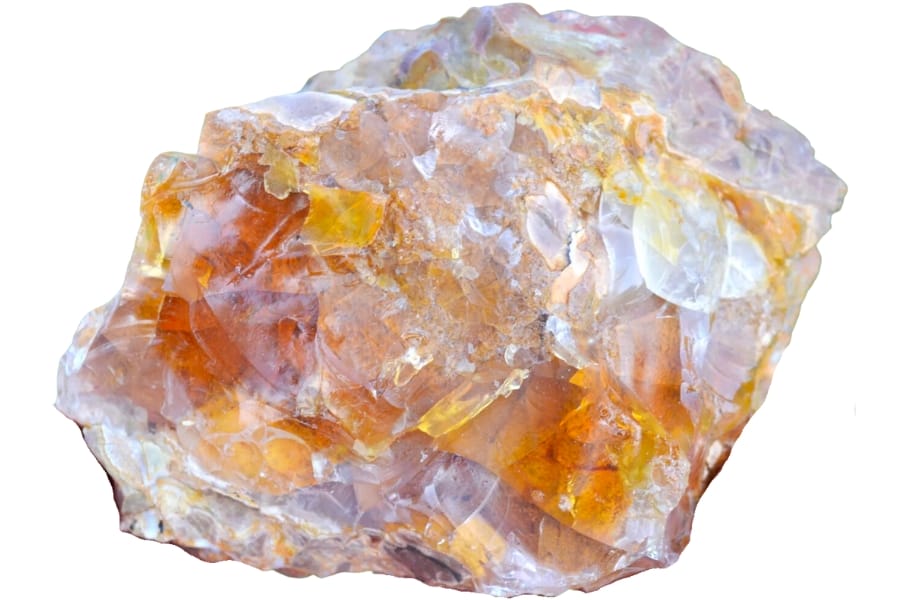
With our rich landscapes and even richer deposits of rocks and minerals, it’s no surprise that Arizona has many great gem mine sites. But if you want to focus your search on opals, below are our top recommended places for you:
Always Confirm Access and Collection Rules!
Before heading out to any of the locations on our list you need to confirm access requirements and collection rules for both public and private locations directly with the location. We haven’t personally verified every location and the access requirements and collection rules often change without notice.
Many of the locations we mention will not allow collecting but are still great places for those who love to find beautiful rocks and minerals in the wild without keeping them. We also can’t guarantee you will find anything in these locations since they are constantly changing.
Always get updated information directly from the source ahead of time to ensure responsible rockhounding. If you want even more current options it’s always a good idea to contact local rock and mineral clubs and groups
Cochise County
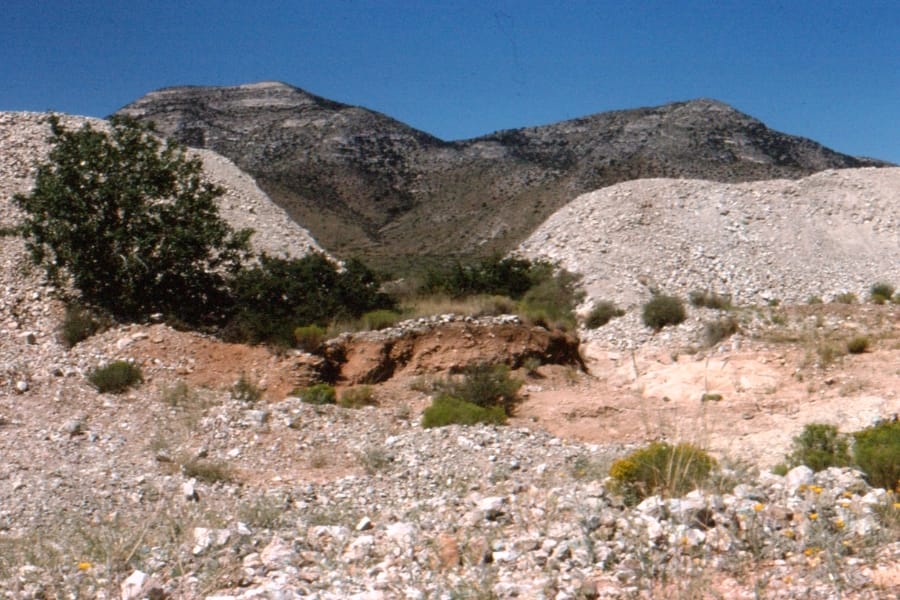
Cochise County has landscapes that’ll make you feel like you’ve stepped onto another planet. Imagine tall, rugged mountains that reach up to touch the sky and wide-open deserts where the ground sparkles with a million different minerals.
The terrain here is a mix of everything— there are valleys that seem to go on forever, rocky hills that are perfect for climbing, and hidden spots where the earth has kept its treasures safe for millions of years.
The geology is just as wild as the terrain. This place is famous for its history of mining, which means there are lots of minerals around.
Getting to Cochise County is easy. If you’re coming in by plane, the closest major airport is in Tucson. From there, it’s about a one to two-hour drive. If you’re driving, Interstate 10 runs right along the northern edge of the county.
But before you set foot here, make sure to review Arizona’s latest collecting guidelines so that you can abide by them throughout your opal hunting.
Where we found opal in the Cochise County
There are a handful of mines, prospects, and claims in Cochise County that bear opals. Some of them are:
- Tungsten Reef Mine
- Flys Peak
- Centurion Mine
- La Fluorita Dulcita prospect
- Festerling Mine
- San Juan Mine
- Empire Mine
- Last Chance Mine
- Maid of Sunshine Mine
- Gallagher Vanadium & Rare Minerals Corp Mine
If you want REAL results finding incredible rocks and minerals you need one of these 👇👇👇
Finding the coolest rocks in isn’t luck, it's knowing what to look for. Thousands of your fellow rock hunters are already carrying Rock Chasing field guides. Maybe it's time you joined the community.
Lightweight, mud-proof, and packed with clear photos, it’s become the go-to tool for anyone interested discovering what’s hidden under our red dirt and what they've already found.
Join them, and make your next rockhounding trip actually pay off.
What makes it different:
- 📍 Find and identify 140 incredible crystals, rocks, gemstones, minerals, and geodes across the USA
- 🚙 Field-tested across America's rivers, ranchlands, mountains, and roadcuts
- 📘 Heavy duty laminated pages resist dust, sweat, and water
- 🧠 Zero fluff — just clear visuals and straight-to-the-point info
- ⭐ Rated 4.8★ by real collectors who actually use it in the field
Arizona Blue Fire Opal Mine
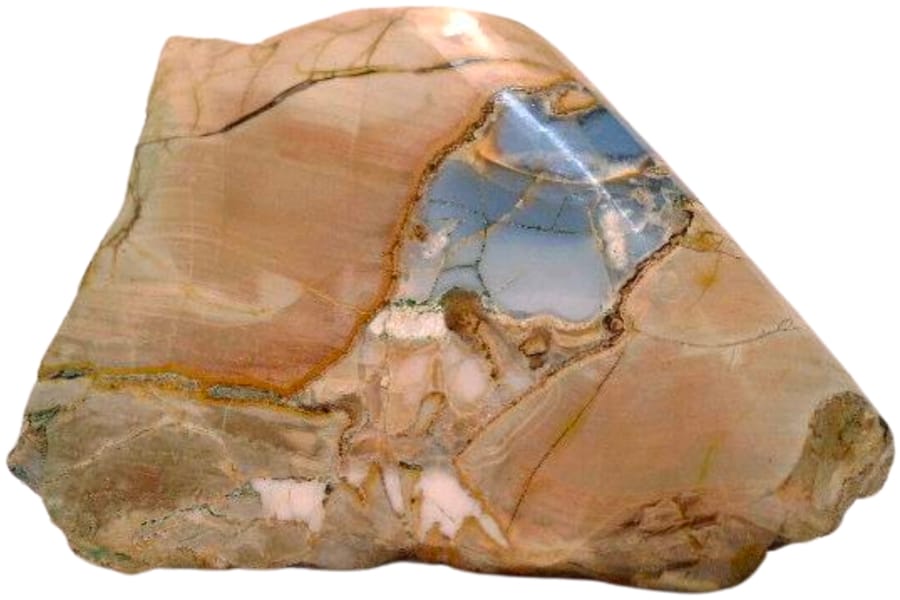
The Arizona Blue Fire Opal Mine is nestled in the rugged terrain of our state’s high desert region. It’s wild and wide open, full of sagebrush and skies that stretch on forever.
The mine is located in an area where the earth is a rainbow of soil and rock colors, from deep reds to soft yellows. Its landscape is hilly and dotted with ancient volcanic rock, which is a clue that you’re in the right place for opal hunting.
Geologically speaking, this mine is sitting on an old volcanic flow. This is important because that’s where you find the best opals.
To reach this place, it’s about an hour’s drive from the city of Flagstaff. You’ll take the highways until the pavement turns to dirt, and then it’s a bumpy ride through the back roads. It’s pretty remote, so make sure you have a good map or GPS.
Where we found opal in the Arizona Blue Fire Opal Mine
To find opal here, you can dig through the dirt and rock at the Arizona Blue Fire Opal Mine. Keep your eyes peeled for flashes of shiny blue colors amidst the earthy browns and gray of the rocks and soil as they might just be the gem you’re looking for.
Sunset Crater
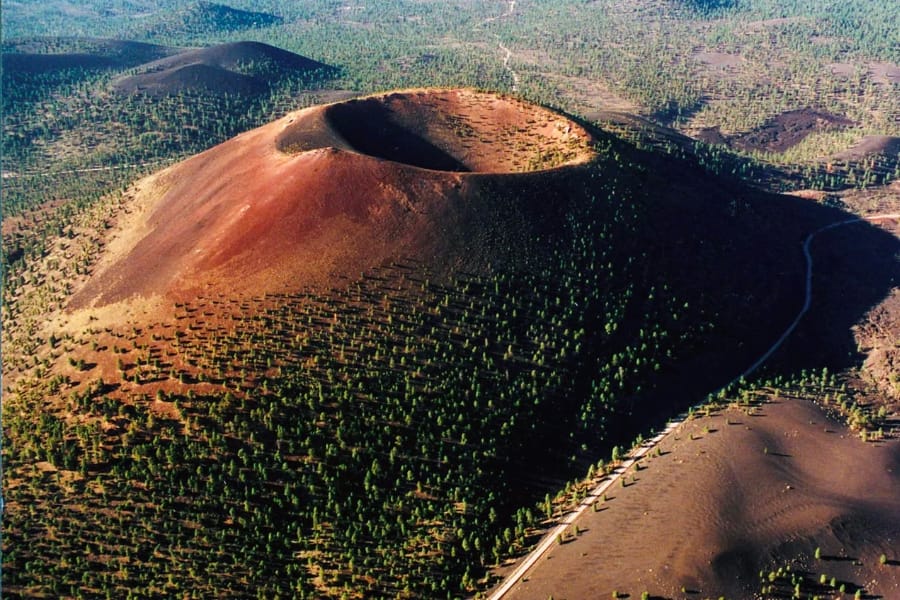
Sunset Crater is an amazing spot where you can walk in the footsteps of volcanoes. It was a huge volcano that erupted nearly a thousand years ago, leaving behind a cone covered in black lava and sprinkled with bits of red and yellow.
The ground around the crater is rugged with hardened lava flows and ash hills, and it’s all set against a backdrop of pine forests. Truly, it’s a place where the earth’s fiery power is on full display.
The terrain here is a bit rough, with trails that take you through the lava beds and cinder fields. These are the fields of black, crunchy rock where you can find all sorts of volcanic rocks.
To get to Sunset Crater, you’ll head toward Flagstaff. From there, it’s just a short drive northeast. It’s open to visitors, and you can easily spend a whole day or more exploring.
Where we found opal in the Sunset Crater
You can find opal if you explore the nooks and crannies of the Sunset Crater, especially those where the lava probably trailed its way down.
Saddle Mountain
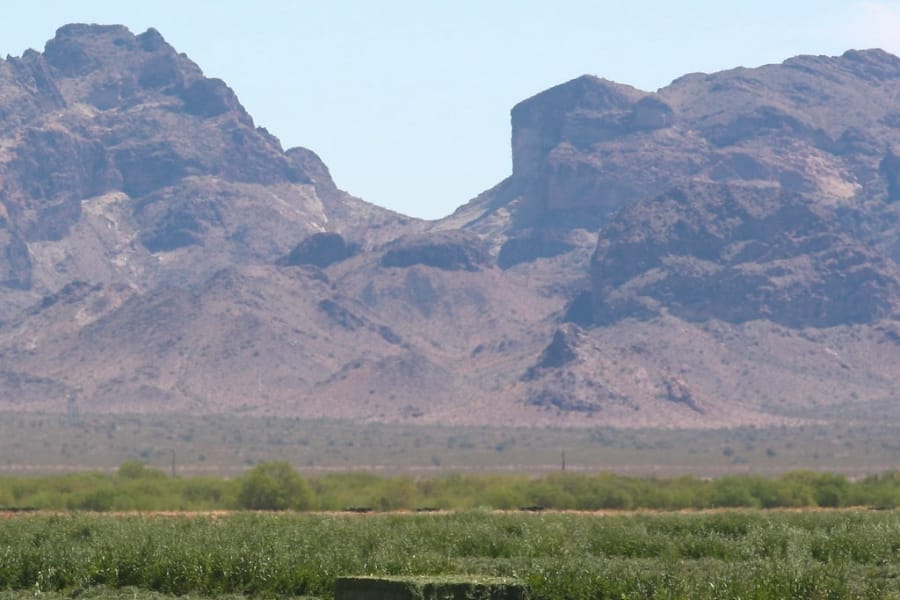
Saddle Mountain is a big, long ridge that looks like a saddle, way out in the desert west of Phoenix. The land around it is classic Arizona: lots of cacti, brush, and wide-open spaces under a big blue sky. The mountain itself is made of layers of rock that are all tilted up on their side, so it’s like looking at a giant slice of the earth’s crust.
The cool thing about Saddle Mountain is that it’s a hotspot for finding fire agate. It’s got layers that shimmer with all the colors of the sunset.
If you’re lucky and patient, you can also find opal here. The geology is just right, with volcanic rock from ancient lava flows that could have the right conditions for opals to form.
Getting to Saddle Mountain isn’t too hard. If you’re coming from Phoenix, you’ll take I-10 west towards Tonopah. Then, you head south on 411th Avenue, which turns into Salome Highway.
After that, keep an eye out for Courthouse Road— that’s your ticket to the mountain. The roads out here can be a bit rough, so a car that can handle dirt roads is a good idea.
Where we found opal in the Saddle Mountain
When looking for opal in Saddle Mountain, your best bet is to search for them on the north slope. You can also look for them around the base of the cliffs or in areas where natural erosion might have exposed new rocks and minerals.
San Pedro River
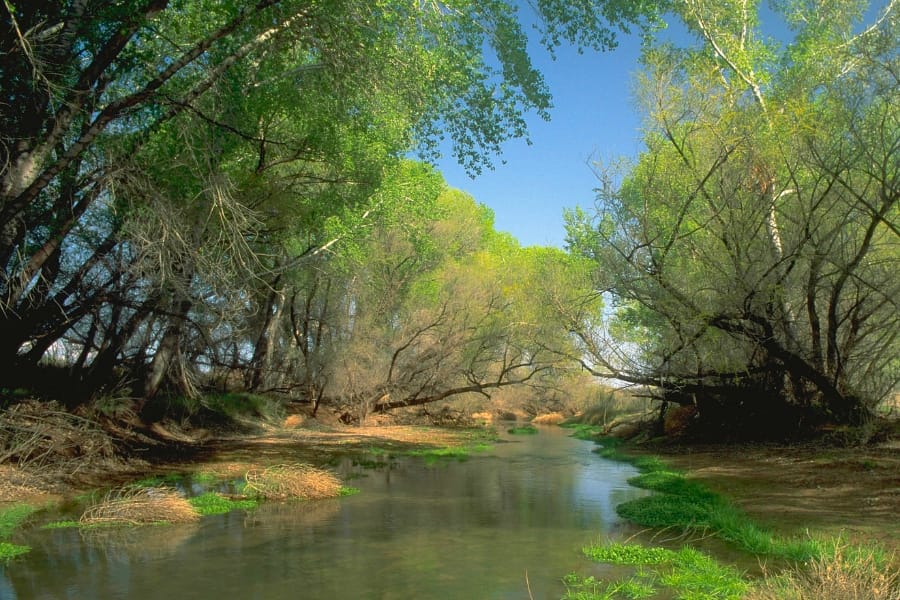
San Pedro River is a ribbon of green that winds through the desert, creating a lush corridor full of life and, yes, rocks! It starts down in Mexico and flows north through Arizona, cutting a path through grasslands and desert. It’s unique because it’s one of the few rivers in the United States that flows south to north.
The terrain along San Pedro is a mix of wetlands, cottonwood trees, and willows. This makes it a great place for birds, so while you’re searching for stones, you’ll see lots of wildlife, too.
The geology is fascinating because it’s part of a big valley that’s been filling up with sediment for millions of years. This means there’s a good chance of finding cool rocks washed down by the river, including opal, which likes to form in areas where water has been flowing for a long time.
To get to the San Pedro River, you can start in the town of Sierra Vista in southern Arizona. From there, you can drive east to find many spots where you can access it. Some trails and paths follow the river, making it easy to explore.
Where we found opal in the San Pedro River
If you want to find opals in the San Pedro River, you can search for them through the layers of sediment. You can also find them if you look closely in the gravel beds and sandbars.
Other Great Places To Find Opal
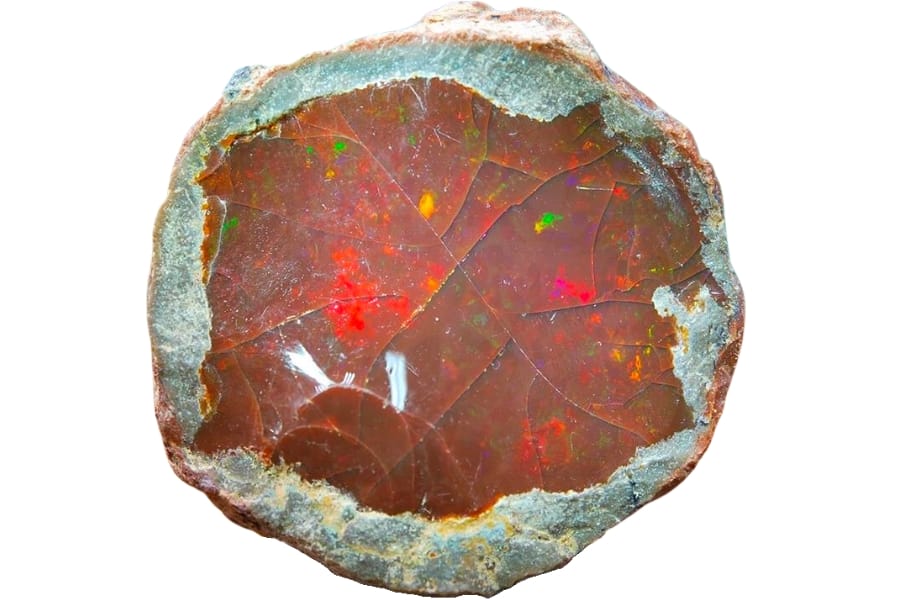
Finding opals is not a matter of if but a matter of where among its plethora of gem-bearing areas. Aside from our top recommendations, below are other incredible areas that you can explore for this gem:
Our recommendations by county
| County | Location |
| Apache | Cato Sells Mine |
| Apache | Concho Creek deposit |
| Coconico | Cameron |
| Coconico | Perrin Ranch |
| Gila | Darius Mine |
| Gila | Skeleton Wash Deposit |
| Gila | Red Bluff Mine |
| Gila | Hope Mine |
| Graham | Deer Creek Fire Agate Mine |
| Graham | Solomon deposit |
| Graham | White Bluffs Uranium prospect |
| Graham | Whitlock Mines Inc. prospect |
| Greenlee | Copper Mountain Mine |
| Greenlee | Duncan area Diatomite deposits |
| Greenlee | Morenci mine |
| Greenlee | Old road left of Engineer Springs |
| La Paz | Cummingtonite deposit |
| La Paz | Heson Mine |
| La Paz | Red Cloud Mine |
| Maricopa | Moon Anchor Mine |
| Maricopa | Evening Star Mine |
| Maricopa | Lake Pleasant Mine |
| Maricopa | Queen of Sheba Mine |
| Mohave | Maggie Mine |
| Mohave | Union Pass |
| Mohave | Black Mountains |
| Navajo | Black Mesa Coal Mine |
| Pima | New Cornelia Mine |
| Pima | Andrada Marble Quarry |
| Pima | Omega Mine |
| Pima | Bulldozer Hill |
| Pima | Silver Bell Mine |
| Pinal | Copper Creek Road |
| Pinal | Feldman and Winkelman Gypsum pits |
| Pinal | Picketpost Mountain |
| Yavapai | Champie Ranch area |
| Yuma | Castle Dome Mountains |
| Yuma | Opalite Hill |
Laws about collecting opals
It’s not generally illegal to collect opal in Arizona, but there are important rules and conditions. You can collect opals on public land managed by the Bureau of Land Management (BLM) for personal use without a permit, but there are limits on how much you can take.
However, collecting on National Park Service land, like at Sunset Crater or within the San Pedro Riparian National Conservation Area, is not allowed to protect natural resources.
On private land, you must obtain permission from the landowner, and some private mines may allow collecting for a fee. Always check local regulations because they can vary. For more information, consult with the Arizona Department of Mines and Mineral Resources (ADMMR).
The Best Places To Buy Opal
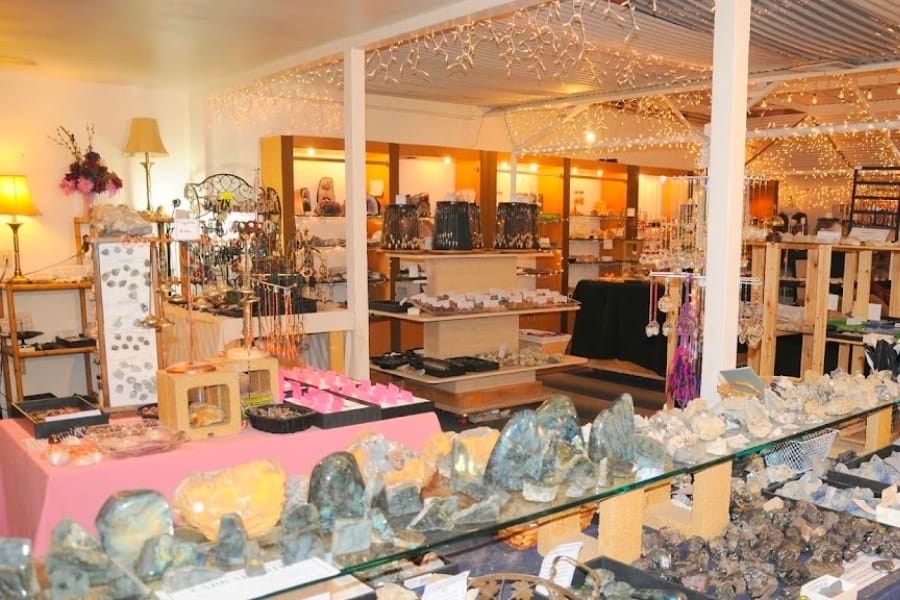
On top of the different incredible areas to find opal, we also have a handful of local shops that sell them here. Below are some of the best one you can pay a visit to:
- Everything Just Rocks – 2235 W 1st St Unit 104-105, Tempe, AZ 85281
- Miners Rock Shop – 1103 W Fairmont Dr, Tempe, AZ 85282
- Spiritstone Gems – 259 AZ-89A, Sedona, AZ 86336
- Stones Crystal Shop – 7085 E 5th Ave, Scottsdale, AZ 85251
- The Crystal Loft – 1710 N 16th St Unit C2, Phoenix, AZ 85006

